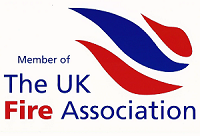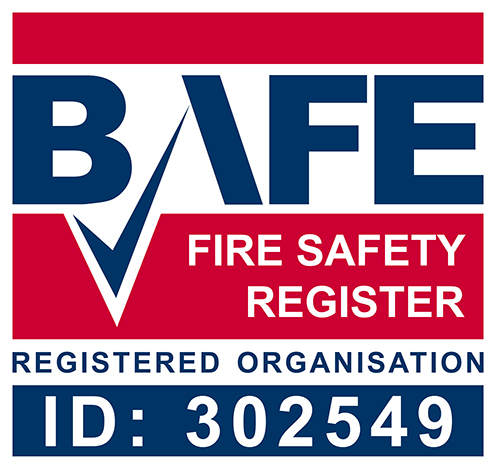FAQs
FAQ’s
Q – How often do fire extinguishers need servicing and do new extinguishers need servicing?
A – All fire extinguishers should be serviced annually by a competent engineer in accordance with BS 5306: Fire extinguishing installations and equipment on premises: Part 3: Commissioning and maintenance of portable fire extinguishers – Code of practice New extinguishers should be provided by a reputable company and the installing engineer should ensure that they are fit for purpose when installed with the service label marked with the date of installation. – SD Fire Solutions can help you find the correct fire extinguishers for your needs and provide annual servicing.
NOTE: The practice of online fire extinguisher retailers offering pre-serviced fire extinguishers is NOT in accordance to BS5306 for very good reasons. Damage to extinguishers like loss of pressure, loss of extinguishing medium, bent handles and hoses which make the extinguisher inoperable do not occur whilst the extinguisher is in the warehouse but all of these issues can occur in transit to the customer after the supplier has already declared the extinguisher ‘fit for operation’. This puts lives at risk, especially if suppliers do not protect extinguishers adequately for shipment. BSI has therefore changed the standard BS5306 to require an ON SITE commissioning for all extinguishers installed under BS5306. This entails a full check of the extinguishers as they arrive on site and the correct weighing, preparation and certification of the extinguishers. Only then can you use the certification document as proof that you have taken your responsibility in accordance to your fire risk assessment seriously. Pre-servicing or pre-labelling is therefore not permitted any longer. If you require your extinguishers to be installed in accordance to BS5306 you must have the extinguishers commissioned on site or alternatively you can have them installed and commissioned on site by a servicing company. BS5306 conformity is always required if you are a business or landlord or if you have to carry out a fire risk assessment.
A fire blanket should be provided in each area where there are cooking facilities, and be wall mounted 1.5m high adjacent to an exit door and away from the cooking appliance. These must comply with BS 6575 (or equivalent).
Q – Please could you tell me under Regulatory Reform (Fire Safety) Order 2005 what risk assessment is required for a block of flats and how often this should be reviewed?
A – Under the Regulatory Reform (Fire Safety) Order 2005, a fire risk assessment is required to be carried out for the common parts of the building. This should be reviewed at ‘regular’ intervals (not defined by the legislation), and when there is a change to the building, either by alteration, building works, or on change of ownership. Such changes may include: –
- alterations to the building, including the internal layout;
- substantial changes to furniture and fixings;
- the introduction, change of use or increase in the storage of hazardous substances;
- the failure of fire precautions, e.g. fire-detection systems and alarm systems
- a significant increase in the number of people present; and
- the presence of people with some form of disability
Q – Why should I consider installing a PA/VA type fire system?
A – Several years ago a survey found that, in the event of a fire, only 13 per cent of people responded to a bell warning. In contrast to this, 45 per cent reacted to a written text message display and fully 75 per cent to a spoken message. This may come as no surprise. Yet as the world around us has become even noisier, it is now even more essential to ensure that in buildings such as educational establishments, pupils, residents and visitors alike are able to respond quickly and correctly to a fire warning. In response, sophisticated voice alarm systems have evolved to form a key part of comprehensive fire detection and alarm systems designed to meet these tougher demands. In one sense, an emergency voice alarm is of limited, if critical, use However, in recent years its capability has been extended, replacing earlier sounder circuits with an integrated and monitored public address/voice alarm system (PAVA) approach. As a result, schools, colleges and other public access buildings can now broadcast a wide range of messages, including paging and information announcements. This maximises the value of their investment in the system, providing users with a more comprehensive service and in the safest possible environment – SD Fire Solutions Fire System designers are experienced in providing PA/VA solutions for different types of premises.
Q – CCTV Systems – How will I know what system I need?
A – The type of system should be designed with the purpose in mind along with environmental conditions. – SD Fire Solutions CCTV system surveyors are trained to match the correct equipment to your system’s requirements and provide design solutions fit for purpose and good value meeting your needs and budgets
Q – I need to add visual alarms to my Fire Alarm System, what should I consider?
A – All Fire Alarm Systems need to be installed to the recommendations of BS5839-1.2013 but since December 2013 the following should also be observed: BS EN 54-23:2010 — “Fire detection and fire alarm systems/ Fire alarm devices/ Visual alarm devices.” This European Standard sets out the requirements, test methods, and performance criteria for beacons, otherwise known as visual alarm devices (VADs). The standard applies only where the purpose of the VAD is to give a visual warning of a fire to the occupants of a building “only to pulsing or flashing visual alarm devices, for example LED standalone beacons (or incorporated within a detector housing) and Xenon beacons or rotating beacons. Devices giving continuous light output are excluded” (BSI). From December 2013, all products of this type will need to be CE marked to show they meet BS EN 54-23. The manufacturer will need to ensure that any product which is CE marked meets with the conformity criteria described in the standard and has also been through the prescribed testing and evaluation process. – SD Fire Solutions Fire Alarm designers will ensure that all new supply and installation of Visual Alarm Devices are to the new standard
Q – How often do my emergency lights need servicing?
A – The system should be installed and serviced according to the relevant British Standard, which is BS 5266, which has several parts. The most important of these are:
- BS 5266: Emergency lighting.
- Part 1: Code of practice for the emergency lighting.
- Part 8: Emergency escape lighting.
Basically, once your installation is in place and certificated to be in compliance with the standard, it should be tested monthly to ensure that it works. This is just a functional test of a few seconds or however long it takes to make sure that all luminaries are lit. This should be undertaken by trained staff. In addition, every year the installation should be serviced by a competent electrician. Monthly tests and annual servicing should be recorded in the fire log book for the premises.
Q – For what reasons should I consider installing an Aspiration type fire detection system?
A – There are 2 main considerations for choosing an aspirating system.
The first is that the sampling pipework used in aspirating systems is more resilient to harsh environments than a standard point smoke detector.
The second is that aspirating systems can often give a much higher sensitivity than a standard smoke detector offering a faster response to give earlier warning.
If either of these 2 reasons fit the requirements of the type of premises or processes within your buildings then an aspirating fire detection system should be considered. So for areas with dust or other particles, very low temperatures such as chilled warehousing, high value IT/data and communications hubs, or where access to a standard type ‘point’ detector would make maintenance difficult or unsafe then aspirating systems can be designed to fit the requirements. – SD Fire Solutions system designers have experience of systems for many types of premises and can help you choose the right solution for yours.
Q – Why do I need a Fire alarm service contract?
This is a requirement of BS5839, the Fire Risk Assessment of your Premises and your legal requirements to your insurers.
Q – What is British Standard BS5839?
This is the British Standard that governs the service of a fire alarm system in the UK and forms part of English law.
Q – What benefit does the service contract give me?
Full compliance to your legal obligation and insurance requirements; along with total “peace of mind”.
Q – What sort of organisation or business needs a fire alarm service contract?
Every company, individual and/or organisation, no one is exempt, where a Fire Alarm System is fitted as a requirement of planning laws and thus must be maintained.
Q – Why do I need a minimum of 2 visits per year?
To comply with the minimum requirements of BS5839 2 visits are scheduled to ensure the Fire system is operational inc. detection, sounders, internal batteries, etc.
Q – What does the engineer do when he visits?
He will ensure every call point and sounder, plus a minimum of 50% of the detection devices are working and the fire system as a whole is in good condition, inc. battery backup, etc.
Q – Does the engineers visit, disrupt my business?
This is possible, however it will depend on the type of system and location of equipment. Our engineers are flexible and normally work around any disruption issues including sound issues.
Q – What do I get at the end of the service contract?
A certificate and report detailing our visit for you and your insurers and “Peace of mind”
Q – Do I need a Fire Alarm service contract every year?
Yes, under BS5839 this is required.
Q – How long do the back-up batteries last for the Fire Alarm panel?
It depends on the fire panel location, temperature, etc., but as a rule of thumb, typically 4/5 years before new units or batteries will be required.
Q – What is fire alarm monitoring?
If your building is unattended at night and a fire breaks out, how can the authorities be alerted to tackle the fire? With fire alarm monitoring from SD Fire Solutions Ltd, your alarm won’t simply ring out unheard because, using Redcare Dual Com technology, your alarm system sends an alert to a dedicated receiving centre where they can immediately alert the local fire and rescue department.
Q – How does a monitored fire alarm work?
There is no time to delay when a fire breaks out since it can spread rapidly causing substantial damage and disruption to your business. Monitored fire alarms aren’t dependent on people in the building or passing by to raise the alarm; the fire brigade is alerted as soon as it’s triggered – 24 hours a day, 7 days a week.











